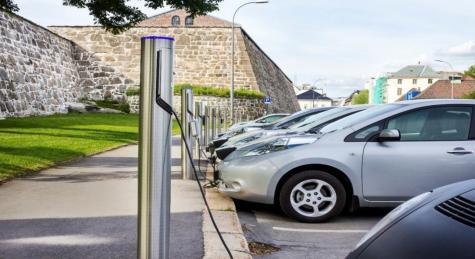
Background
With transport making up 22% of all energy-related greenhouse gas emissions, it is a crucial sector to decarbonize in order to meet the Paris agreement and limit temperature rises to 1.5ºC. Electrification of vehicle fleets is, along with modal shift to less polluting modes, an important tool to align transport with a climate neutral future where the Sustainable Development Goals are achieved.
Current State of Play
UNECE countries are already making progress towards electrification. Fifteen UNECE countries with available data have new registrations of plug-in passenger cars as 5% or more of total passenger car registrations in 2020, with this figure as high as 70% in Norway. Countries across the region are expected to make even stronger progress towards electrification in the coming years, especially given that most UNECE member States have made pledges and commitments to zero tailpipe vehicles in the coming decades.
But what potential barriers exist to mass adoption?
Barriers to Electrification
In addition to the potentially higher up-front costs of an electric vehicle purchase, a common fear among motorists is range anxiety and the potential of running out of power far from an available charging station. Home and work charging often provide the bulk of electric vehicle users’ power supply, but it is other more occasional journeys where potential problems and range anxiety lie.
To alleviate range anxiety, car manufacturers are increasing the battery sizes on-board electric vehicles, having a high impact on vehicle mass and vehicle price. But range anxiety can also be eased with appropriate recharging infrastructure and smart charging solutions.
Electric vehicle charging equipment and charging stations are currently not as widespread as petrol stations. And even when they exist it is important to consider the number of devices, their power, accessibility and geographical location, as well as the price of charging, accessibility, and even facilities nearby. Accurate, transparent and impartial data are essential for this, and understanding trends in charging infrastructure across countries allows assessments of what policies are working.
Interoperability and compatibility between vehicles and chargers are also paramount to wide adoption of EVs. Recharging EVs must be easy, safe, at the optimal speed for the vehicle, its battery and the power grid. Connector design between the vehicle and recharging station and communication protocols between the grid, the recharging infrastructure and the vehicle need to ensure all those criteria are met between all vehicles available on the market and all recharging stations deployed.
Objectives of Event
The side event explored the policy tools available for countries to overcome barriers to fast electrification.
- Understanding the problems across countries require good-quality official statistics. Existing efforts to collect charging infrastructure statistics at the country and international levels will be shared.
- The need for harmonized connector design and communication protocols globally to ensure seamless and flawless EV recharge all over the world will be assessed.
- The importance of harmonized regulation to achieve safe and fast charging, enable grid balancing and appropriate grid and recharging capacity, as well as minimize the carbon footprint of EV recharge will be explored.
Speakers
Moderated by Ms Els de Wit, Chair, UNECE Working Party on Transport Trends and Economics; Programme Coordinator, Smart and Sustainable Mobility, Ministry of Water Management and Infrastructure, Netherlands.
- John Wilkins, Chair, UNECE Working Party on Transport Statistics; Deputy Director, Travel and Environment Data and Statistics; Department for Transport, United Kingdom.
- Philippe Vangeel, Secretary-General, AVERE.
- Alex Schroeder, Chief Technology Officer, Joint Office of Energy and Transportation, United States
- Jacques Warichet, Power systems transformation analyst, International Energy Agency.
- Saki Gerassis, Policy and Data Officer; DG MOVE, European Commission.
- Duncan Kay, Vice-Chair, UNECE Working Party on Pollution and Energy; Head of Vehicle Engineering; Department for Transport, United Kingdom.
Potential Outcomes
As part of the Inland Transport Committee Strategy to 2030, the ITC is uniquely placed to enable to develop globally harmonized regulatory provision that would apply all over the world, and will make sure EV use is safe, environmentally-friendly, interoperable, increasing their potential to decarbonise transport. The World Forum for Harmonization of Vehicle Regulations is uniquely placed to develop such technical regulatory provisions and have them adopted globally by United Nations member States. The Working Party on Transport Statistics is in the process of assessing data availability for electric vehicle infrastructure and may initiate data collection in the near future, with any discussions during this event guiding work on this. The Working Party on Transport Trends decided at its 2022 session to establish a steady workflow on general trends and developments surrounding passenger EV and its charging infrastructure including aspects of accessibility to and affordability of charging at public EV charging equipment and its integration in the electricity grid. Discussions like this side event can guide WP.5’s workflow on this and promote dialogue on the best solutions.